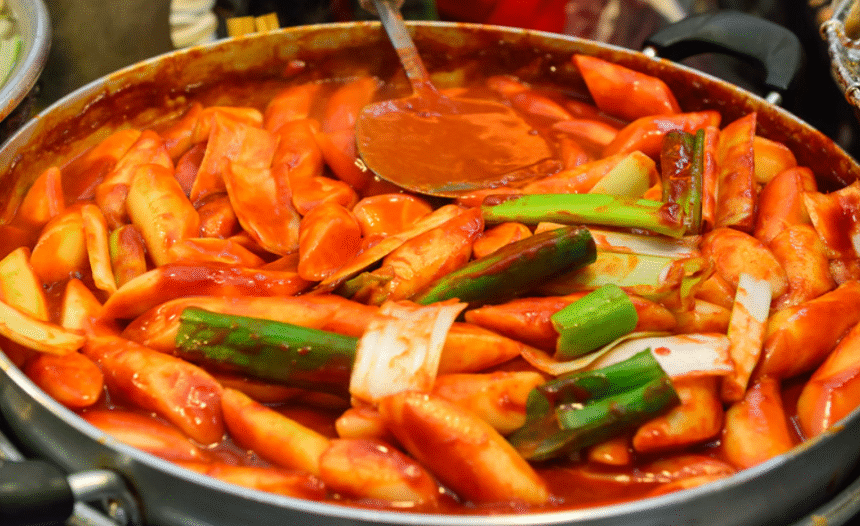With its depth of flavors and scents, Korean food is beloved by taste buds across the globe. The spices that elevate each dish are at the heart of this culinary wizardry. These ingredients add flavor to the dish and represent the richness and history of Korean cuisine. Here are ten popular spices that make this colorful cuisine stand out.
1. Gochugaru (Korean Red Pepper Flakes)
Gochugaru is one of the most used spices in Korean food. It has a unique flavor and is a staple ingredient of the cuisine. It gives many dishes a deep-red color and a smoky, slightly sweet flavor. Crucial for kimchi, it brings gentle heat, which can be milder or fiercer, depending on your recipe. This multi-purpose spice can amplify soups, veggies, stews, and even side dishes to give them warmth and color.
2. Gochujang (Red Chili Paste)
Gochujang has a distinct flavor with a clear sweetness, savoriness, and spiciness. It is a thick paste made from fermented red pepper powder, glutinous rice, soybeans, and salt. Apart from being an indispensable condiment in bibimbap and tteokbokki, it adds depth and complexity to sauces and marinades with its unique flavor that strikes the perfect balance of spice and mild sweetness.
3. Doenjang (Fermented Soybean Paste)
Doenjang provides a deep, earthy, umami richness and is a staple of every Korean kitchen. Its base is a fermented soybean paste that adds saltiness to various dishes. Its robust flavor works wonders with meats, veggies, and seafood, featuring a flavor that tastes like a Korean version of miso.
4. Sesame Oil
Sesame oil can add a nutty fragrance and smoothness to any dish to make it pop! It is derived from toasted sesame seeds and is used to finish salads, noodles, and grilled meat. This highly scented oil adds flavor and helps to create a smooth mouthfeel characteristic of some Korean dishes.
5. Soy Sauce
Soy sauce is a basic ingredient in winning Korean recipes, giving them a foundation of saltiness and umami flavor. Its deep color and full-bodied flavor add depth to broths, marinades, and dipping sauces. Korean soy sauces, like ganjang, are subtle, as each variety has specific culinary purposes.
6. Garlic
The strong flavor and fragrance of garlic make it a must-have ingredient in Korean foods. It has an aromatic, pungent flavor and is often used in marinades, kimchi, and stir-fries to bring out the flavor of other ingredients. Apart from its distinct taste, garlic is packed with health benefits, such as increasing body immunity and lowering the level of inflammation, reinforcing its significance in Korean cuisine.
7. Ginger
Ginger provides a zingy, warming quality that works well with the sharp, spicy, savory components of Korean fare. Commonly tossed with garlic, it’s used in marinades, soups, and even banchan (small side dishes). Its aromatic properties complement meat and seafood dishes, refreshingly contrasting the taste.
8. Green Onions
Green onions (scallions) add a fresh crunch and a mild oniony kick to Korean dishes. They are also used as a garnish for soups, stews, and pancakes and are commonly added to marinades and kimchi. They add brightness and visual appeal to countless recipes.
9. Perilla Leaves
Perilla leaves add a distinct, fragrant note to Korean dishes. The slightly minty, basil-like flavor pairs well with grilled meats and wraps. Perilla leaves are usually used in ssam (lettuce wraps) and pickles. They present a unique flavor and enhance the dining experience.
10. Salt
Salt is a basic yet essential spice in Korean cuisine. It enhances flavors and acts as a preservative for ingredients, especially in kimchi and pickled foods. For the more classical option, Korean sea salt can make the dish taste even better with its balance of purity and minerals without overpowering the original flavors.
To Wrap Up
Korean food has a fantastic spice repertoire that brings complexity and richness. Every spice has its place, and each role is critical to achieving a unique balance of flavors that defines Korean dishes. With this knowledge of the fundamentals, one can begin to understand the culinary crafts of Korea. From a seasoned cook to a curious foodie, delve into these spices for a flavorful walk into the core of Korean cuisine.















